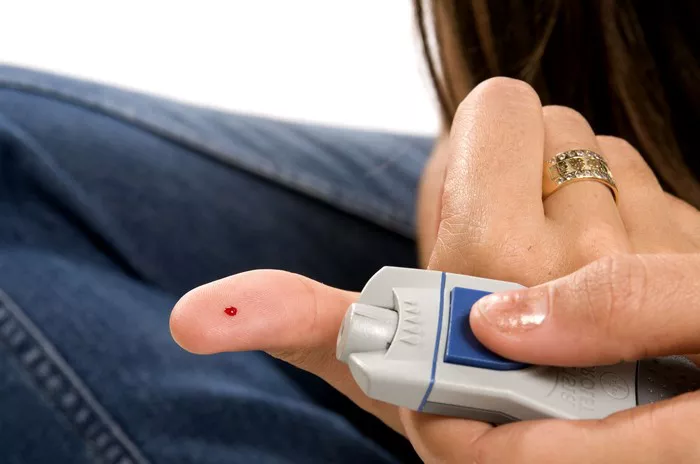Prediabetes is a condition characterized by higher-than-normal blood sugar levels, but not high enough to be diagnosed as diabetes. It serves as a warning sign that individuals are at increased risk of developing type 2 diabetes, heart disease, and other serious health complications if proactive steps are not taken. While a prediabetes diagnosis may seem daunting, it also presents an opportunity for individuals to make positive lifestyle changes, particularly in their dietary habits, to prevent or delay the progression to type 2 diabetes. In this comprehensive article, we delve into dietary strategies and recommendations for individuals with prediabetes to promote better blood sugar control, overall health, and well-being.
Understanding Prediabetes and Its Implications:
Prediabetes occurs when blood sugar levels are higher than normal but not yet high enough to be classified as diabetes. The primary indicator of prediabetes is elevated blood glucose levels, typically measured through fasting plasma glucose (FPG) tests, oral glucose tolerance tests (OGTT), or hemoglobin A1c (HbA1c) tests. Individuals with prediabetes are at increased risk of developing type 2 diabetes, heart disease, stroke, and other complications if left untreated.
Dietary Recommendations for Prediabetes Management:
1. Emphasize Whole, Nutrient-Dense Foods:
- Focus on incorporating a variety of whole, minimally processed foods into your diet, including fruits, vegetables, whole grains, lean proteins, and healthy fats.
- Choose high-fiber foods such as legumes, nuts, seeds, and whole grains to help stabilize blood sugar levels and improve insulin sensitivity.
2. Control Portion Sizes:
- Pay attention to portion sizes to avoid overeating and excessive calorie intake, which can contribute to weight gain and worsen insulin resistance.
- Use measuring cups, food scales, or visual cues to estimate appropriate portion sizes for different food groups.
3. Monitor Carbohydrate Intake:
- Be mindful of carbohydrate consumption and focus on choosing complex carbohydrates with a lower glycemic index, such as whole grains, fruits, vegetables, and legumes, which are digested more slowly and have less impact on blood sugar levels.
- Limit refined carbohydrates and sugary foods and beverages, including white bread, pastries, sugary drinks, and sweets, as they can cause rapid spikes in blood sugar levels.
4. Include Lean Proteins:
- Incorporate lean protein sources such as poultry, fish, tofu, legumes, and low-fat dairy products into your meals and snacks to help promote satiety, stabilize blood sugar levels, and support muscle health.
5. Choose Healthy Fats:
- Opt for sources of healthy fats such as avocados, nuts, seeds, olive oil, and fatty fish like salmon and trout, which provide essential nutrients and help improve insulin sensitivity.
- Limit saturated and trans fats found in processed foods, fried foods, and high-fat dairy products, as they can increase inflammation and insulin resistance.
6. Focus on Meal Timing and Distribution:
- Spread your food intake evenly throughout the day, aiming for three balanced meals and one to two snacks as needed to prevent excessive hunger and overeating.
- Consider incorporating intermittent fasting or time-restricted eating patterns under the guidance of a healthcare professional, as some studies suggest they may benefit blood sugar control in prediabetic individuals.
7. Stay Hydrated:
- Drink plenty of water throughout the day to stay hydrated and support overall health. Limit intake of sugary beverages and opt for water, herbal teas, or unsweetened beverages instead.
8. Practice Mindful Eating:
- Be mindful of your eating habits and pay attention to hunger and fullness cues. Eat slowly, savor each bite, and avoid distractions such as television or electronic devices to promote mindful eating and prevent overeating.
Meal Planning and Sample Menu Ideas:
1. Breakfast:
- Whole grain oatmeal topped with fresh berries and chopped nuts
- Greek yogurt with sliced fruit and a drizzle of honey
- Vegetable omelet made with eggs, spinach, tomatoes, and mushrooms
2. Lunch:
- Grilled chicken salad with mixed greens, cherry tomatoes, cucumber, and avocado
- Quinoa and black bean salad with diced bell peppers, corn, and cilantro
- Whole wheat wrap filled with hummus, sliced turkey, lettuce, and shredded carrots
3. Dinner:
- Baked salmon with roasted sweet potatoes and steamed broccoli
- Stir-fried tofu and mixed vegetables served over brown rice
- Grilled shrimp skewers with quinoa pilaf and grilled asparagus
4. Snacks:
- Sliced apple with almond butter
- Carrot sticks with hummus
- Plain Greek yogurt with a sprinkle of cinnamon
Conclusion:
In conclusion, adopting a balanced and nutritious diet is essential for managing prediabetes and reducing the risk of developing type 2 diabetes. By focusing on whole, nutrient-dense foods, controlling portion sizes, monitoring carbohydrate intake, and incorporating lean proteins, healthy fats, and fiber-rich foods into meals and snacks, individuals with prediabetes can improve blood sugar control, promote overall health, and reduce the risk of progression to type 2 diabetes and other complications. It is important to consult with a registered dietitian or healthcare provider to develop a personalized dietary plan tailored to individual needs, preferences, and health goals. With the right dietary approach and lifestyle modifications, prediabetic individuals can take proactive steps to protect their health and well-being for years to come.


























